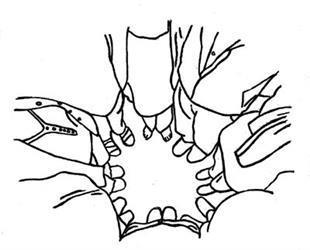Freely released into the cosmos every few days...
Reflection 740
Welcome!
The question of colour
Let's start with one of the simpler social problems, but a very, very important, and in some areas of the world a very, very tragic question – the question of colour, the question of race. Now I am going to ask you to suppose I'm a black man, and Anne here is a white woman – well, you don't have to suppose that, you can see that she is white. Suppose I am a Negro. You will see that here is Douglas, a Negro, and here is Anne, a Caucasian person. It's black here and it's white there. Now, if Anne and I forget you, and still work on this understanding that I’m a Negro and she is a white person, the story we have when we look at each other is in reverse, is it not? Because I am the person now who has the white face, is seized of the white face, and Anne is the person — the only face she is now in receipt of is black. We have traded colour. Anne and I have traded colour. It's not your story. Your story is that I am a Negro and she is white. Our story is exactly the other way round on this platform.
This is for real. I heard of a television programme in America where a young Negro was being interviewed. He was asked why he didn't get a job – he was out of work. He said, Well, when I go and seek work, they tell me I'm black. But you know, I'm not black. You will say he was a fool. He was not a fool. He was speaking the truth, surely, from his own point of view. If I'm black, here I am not black. Or put it yet another way – where do I keep my black face if I am a Negro? I keep it four feet from here in the mirror. I keep it in you. I keep it in the camera. I keep it out there. I don't have it here. Here I have what Buddhism calls my “original, bright and charming face” which is neither black, pink, yellow, brown or anything else — my facelessness which is colourless, featureless. This is a real answer to a real problem.
From 'Enlightenment and Social Responsibility', a talk by Douglas Harding to the London Buddhist Society in 1972.

















